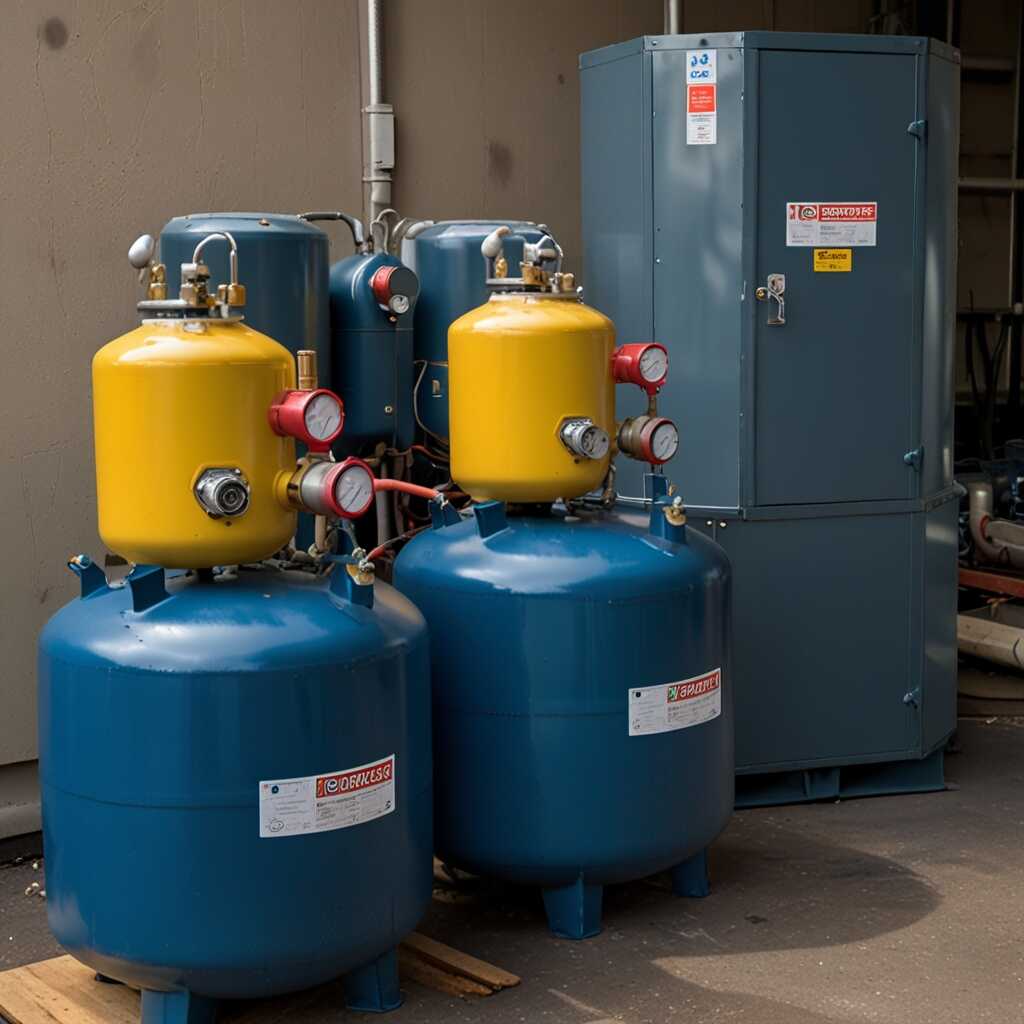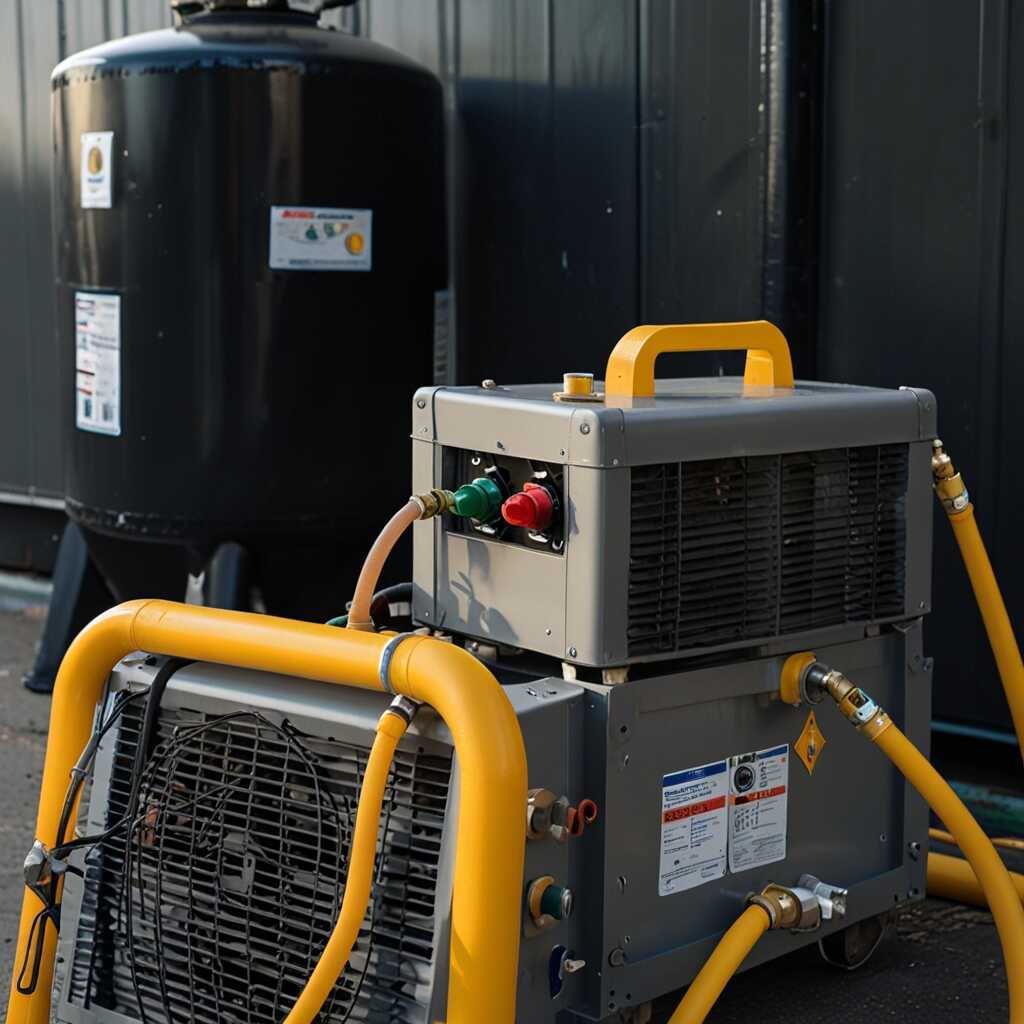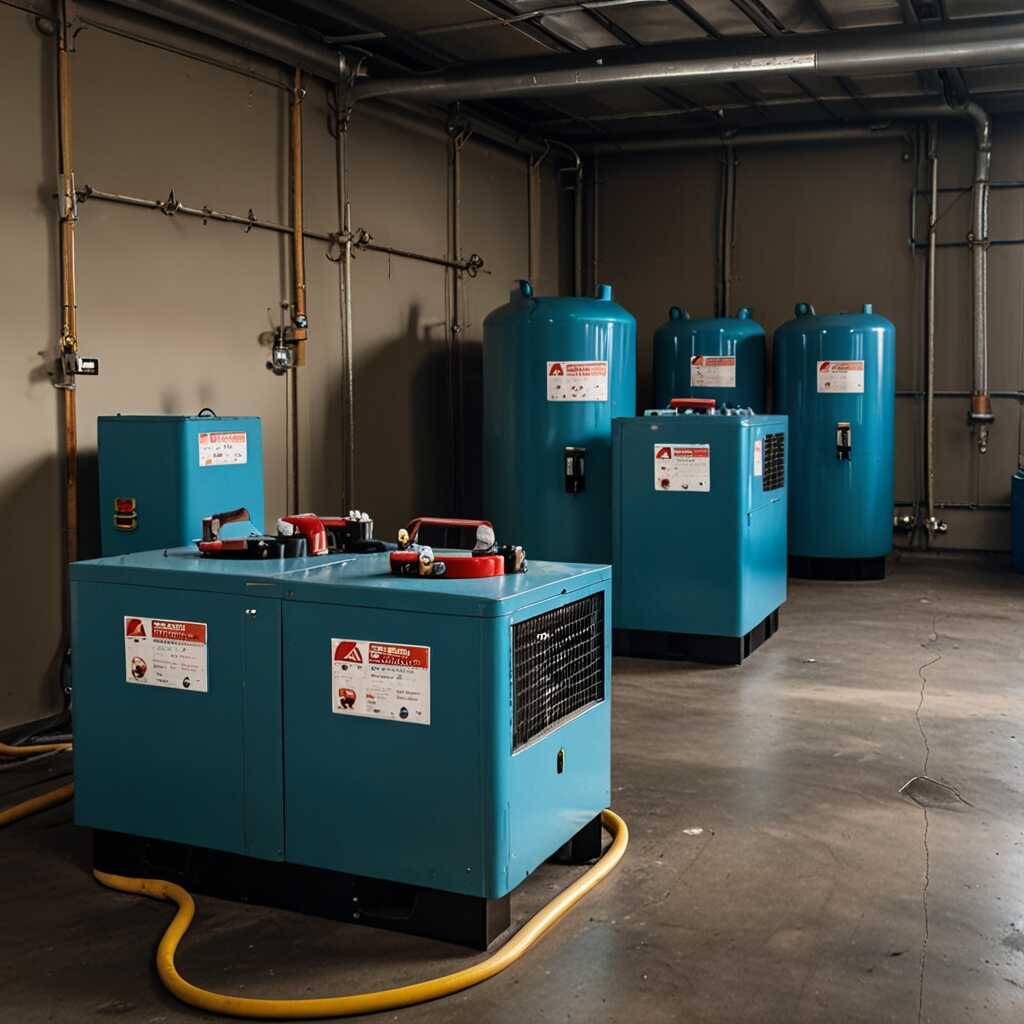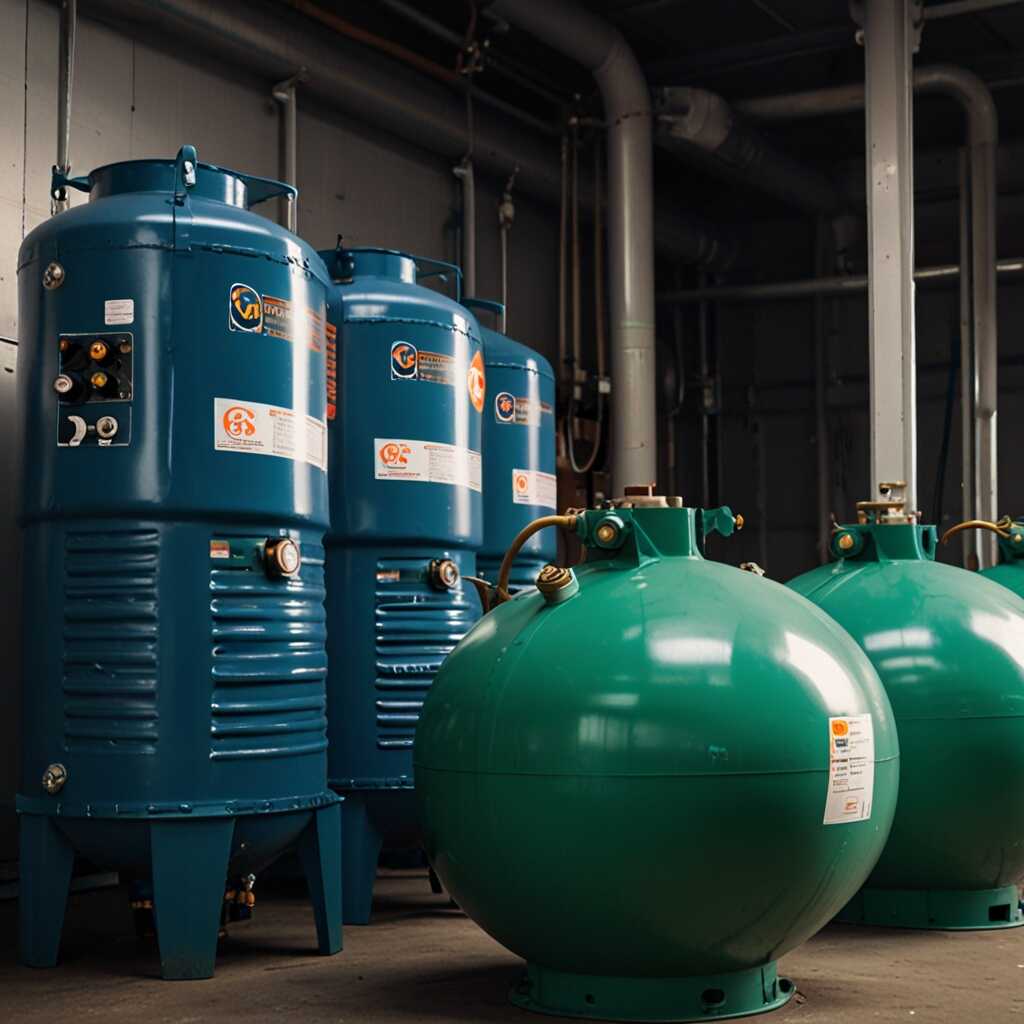Scheduled maintenance for refrigerant recovery machines is essential to prevent unexpected breakdowns and ensure optimal performance. Regular upkeep helps identify potential issues before they escalate into costly repairs or downtime. At Refrigerant Recovery Pro, our expertise in recovery methods and equipment care can guide HVAC professionals in implementing effective maintenance practices. Prioritizing maintenance not only enhances equipment longevity but also supports regulatory compliance and safe refrigerant management.
Reasons Regular Maintenance is Essential for Refrigerant Recovery Machines
Regular maintenance is crucial for the performance and longevity of refrigerant recovery machines. It ensures reliability, efficiency, and safe operation. Neglecting maintenance can lead to decreased performance and unexpected breakdowns, resulting in costly repairs. Common risks include refrigerant leaks, inefficient recovery rates, and potential equipment damage. To prevent these issues, maintenance checks should be conducted at least every six months. Following a strict maintenance schedule enhances the machine’s functionality and extends its operational life.
Key Maintenance Practices for Refrigerant Recovery Machines
Key maintenance practices include regularly checking seals and gaskets for wear and tear, ensuring that filters are clean, and testing pressure gauges for accuracy. Timely inspection and replacement of components can prevent significant failures. Experienced technicians should conduct thorough reliability testing during each maintenance visit. This testing helps identify potential problems before they escalate. Regular reviews of operational performance data also guide future maintenance decisions. By following best practices, HVAC professionals can help maintain refrigerant recovery machines at peak performance levels.
Frequent Problems Caused by Neglected Maintenance
Neglected maintenance can lead to several critical issues in refrigerant recovery machines. Common problems include reduced efficiency, which affects the machine’s capacity to recover refrigerants effectively. This inefficiency can cause longer recovery times, increasing the operational cost. Lack of scheduled maintenance often results in frequent breakdowns, impacting reliability and interrupting HVAC operations. Additionally, wear and tear on seals and hoses can lead to refrigerant leaks, presenting compliance issues. For HVAC professionals, adhering to a maintenance schedule is essential for optimal performance and compliance.
Impact of Neglected Maintenance on Efficiency and Reliability
Neglecting maintenance significantly impacts the efficiency and reliability of refrigerant recovery machines used in HVAC systems. Regular servicing includes testing critical functions, checking for leaks, and ensuring that components operate correctly. Without routine checks, machines may not perform at acceptable standards, resulting in poor refrigerant recovery rates. Studies show that HVAC professionals encourage adherence to maintenance schedules, citing improved performance and reliability. Each scheduled service enhances the machine’s durability, ensuring that it can handle demanding tasks efficiently. Maintaining a refrigerant recovery machine improves longevity and lowers operational costs.

Advantages of Implementing Proactive Maintenance Practices
Proactive maintenance offers numerous benefits for refrigerant recovery machines. It significantly enhances equipment efficiency and reliability, minimizing unexpected breakdowns. Regular servicing leads to improved performance, ensuring machines operate optimally. Technicians can identify potential issues early through systematic testing, which helps avoid costly repairs. HVAC professionals focusing on essential maintenance tasks see enhanced longevity of their equipment. Using data from regular reviews, businesses experience a reduction in operating costs. Studies show that companies can save millions annually by implementing proactive maintenance.
Essential Maintenance Tasks for Optimal Machine Performance
Essential maintenance tasks include checking refrigerant levels, inspecting for leaks, and testing system components. HVAC professionals should prioritize these tasks during scheduled maintenance sessions. Regularly replacing oil and filters enhances machine performance and reliability. Detailed tests ensure that recovery machines can handle various refrigerants effectively. These maintenance activities result in better overall functionality and compliance with industry standards. Refrigerant Recovery Pro recommends maintaining a log of service activities. This log provides valuable data for optimizing future maintenance schedules.
Key Numerical Insights on Equipment Care for HVAC Systems
- Regular maintenance can reduce equipment breakdowns by up to 30%.
- Scheduled servicing improves efficiency by 15% on average.
- Annual check-ups can extend machine lifespan by 5 to 10 years.
- Over 70% of HVAC professionals recommend scheduled maintenance.
- Approximately 20% of breakdowns arise from neglecting regular upkeep.
- Investing in routine maintenance can save up to $1000 in emergency repairs.
- Effective maintenance practices can enhance refrigerant recovery rates by 25%.

How to Establish an Effective Maintenance Schedule
Creating a maintenance schedule for refrigerant recovery machines involves considering factors such as usage frequency, manufacturer’s guidelines, and environmental conditions. Include routine tasks like checking refrigerant levels, inspecting hoses and connections, and cleaning filters. Professional testing and inspections should be conducted at least annually or more often, depending on usage. This ensures reliability and efficiency and addresses potential issues early. Refrigerant Recovery Pro can provide tailored recommendations based on specific equipment and usage data.
Essential Routine Maintenance Tasks for Refrigerant Recovery Machines
Essential routine maintenance tasks for refrigerant recovery machines include checking oil levels, inspecting gauges, and validating system performance. Regularly cleaning the unit and checking for wear on seals and hoses helps prevent leaks. Implementing a checklist for these tasks improves reliability and ensures optimal performance. Each task enhances the efficiency of the machine. Using tools like performance monitoring systems can track and validate the results of these maintenance activities. Keeping a log of maintenance helps in identifying patterns or recurring issues.

Essential Tools for Effective Maintenance of Recovery Machines
The maintenance of refrigerant recovery machines relies on specialized tools that enhance performance and reliability. Key tools include recovery tanks, vacuum pumps, manifold gauges, and refrigerant scales. Recovery tanks should have a capacity of at least 30 pounds for optimal efficiency. Manifold gauges provide important pressure readings that help identify issues early. Using reliable testing devices ensures accurate diagnostics when troubleshooting. Following best practices in maintenance includes regularly reviewing the condition of these tools and replacing them if needed.
Recommended Brands and Models for Maintenance Tools
HVAC professionals often rely on brands like JB Industries, Yellowjacket, and Appion for high-quality refrigerant recovery tools. JB Industries’ Evacuation Kit is known for its durability and reliable performance while testing. Yellowjacket tools provide essential features, ensuring efficient recovery and precise measurements. Appion’s manifold gauges are robust and easy to use, enhancing overall serviceability of recovery machines. Choosing tools from these reputable brands helps boost the longevity of your equipment and ensures that servicing tasks are performed effectively.
Advantages of Routine Equipment Upkeep
- It maximizes operational efficiency, reducing energy costs for users.
- Routine checks help catch potential issues early, preventing larger problems.
- Scheduled care increases the reliability of recovery machines in use.
- Consistent maintenance keeps refrigerant systems compliant with regulations.
- It enhances safety for technician operations around refrigerant equipment.
- Timely servicing can elevate customer satisfaction through reliable service.
- Professionals see fewer unexpected costs, improving budgeting accuracy.

Best Maintenance Practices to Follow for Optimal Equipment Performance
To ensure reliability of refrigerant recovery machines, HVAC professionals must follow essential maintenance tasks. These include regular cleaning of coils and filters, checking refrigerant levels, and inspecting hoses for cracks. Implementing scheduled maintenance procedures helps avoid unexpected breakdowns. It’s important to keep detailed records of all maintenance work and review equipment performance regularly. Utilizing the right maintenance tools needed for these tasks also plays a crucial role. Tools such as vacuum gauges and leak detectors enhance efficiency and help identify issues before they lead to equipment failure. Overall, best practices for HVAC professionals include adhering to manufacturer recommendations and focusing on reliable performance testing.
Tools and Equipment Essential for Maintenance Tasks
Specific tools and equipment are vital for maintaining refrigerant recovery machines effectively. Commonly used items include manifold gauges, vacuum pumps, and recovery bags. Manifold gauges help monitor pressures and troubleshoot system issues. Vacuum pumps assist in removing moisture and contaminants from the system, improving refrigerant recovery efficiency. Recovery bags are designed to securely hold any recovered refrigerant, ensuring safe handling and disposal. Each piece of maintenance equipment provides HVAC technicians with the necessary means to perform regular checks and uphold reliability testing methods. Having these tools on hand enhances technician capabilities and results in better overall performance.
Risks of Disregarding Manufacturer Maintenance Guidelines
Ignoring the manufacturer maintenance guidelines for refrigerant recovery machines can lead to serious consequences. This negligence may result in equipment performance issues, such as decreased efficiency and increased wear. More importantly, it can create safety hazards that threaten both workers and equipment. For example, failure to perform routine maintenance can cause leaks, leading to potential refrigerant exposure, which is harmful. Moreover, the costs associated with repairs can escalate quickly. Studies show that about 70% of unexpected breakdowns stem from insufficient maintenance practices. Therefore, following these guidelines is essential to ensure reliability and longevity of equipment.
Common Equipment Issues from Neglecting Maintenance
Neglecting maintenance for refrigerant recovery machines can lead to a variety of common equipment issues. Frequent problems include compressor failure, refrigerant leaks, and electrical faults. These issues often stem from a lack of regular testing and inspections that the manufacturer recommends. For instance, without routine filter checks, refrigerant flow can become restricted, causing the machine to overheat. This overheating can diminish performance and lead to a complete system shutdown. Following maintenance schedules helps to identify such problems early, enabling timely repairs and ensuring the equipment operates at peak efficiency.
Brands and Their Impact in Refrigerant Recovery Solutions
- Brand A: Known for high efficiency but can be pricier than others.
- Brand B: Offers affordable options with great support but lacks advanced features.
- Brand C: Provides reliable performance, yet may be harder to service.
- Technicians often choose Brand D for user-friendly operation and maintenance.
- Facility managers prefer Brand E for its durability, but parts can be costly.
- Use of these brands can vary based on company size and service needs.
- HVAC companies often target brands that fit well with their service capabilities.
Case Studies Illustrating Successful Maintenance Strategies
This section showcases real-world examples of companies implementing effective maintenance strategies for refrigerant recovery machines. In one case, a leading HVAC service company improved their equipment performance by 30% through a rigorous maintenance schedule. Another case study reveals that a refrigeration service provider reduced breakdowns by 50% after introducing regular testing and equipment reviews. These cases highlight the essential nature of scheduled maintenance in ensuring reliability and performance.
Real-World Success Stories and Their Impact on Performance
Many HVAC professionals have found great success by integrating scheduled maintenance into their operations. One facility manager noted that consistent maintenance of refrigerant recovery machines not only increased equipment efficiency but also reduced repair costs by an impressive 40%. This real-world example underscores how reliable maintenance practices can enhance the longevity and functionality of recovery equipment. Such proven results reinforce the importance of dedicated maintenance strategies in preventing unexpected breakdowns and ensuring equipment safety.